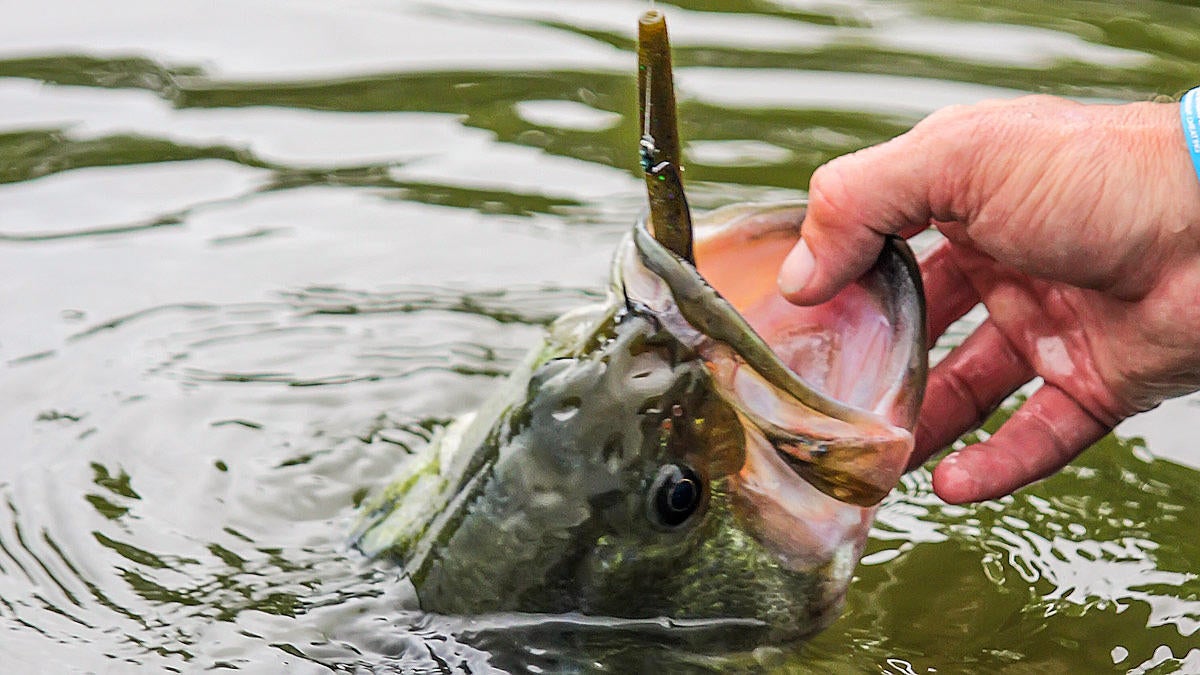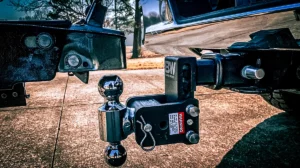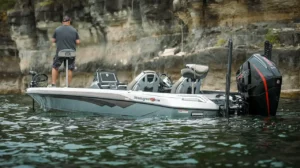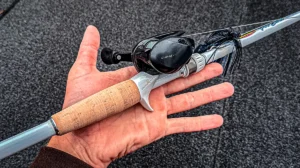This is a tricky time of year to be a bank angler. I can remember being stumped for years while trying to catch winter bass from shore. It’d be miserable weather and I’d often go weeks without getting a bite. It was enough to darn near drive me crazy.
It took me a long time and a lot of frustration to crack the code, but I’ve learned several things that will help you be more successful this winter. Hang with me and you’ll notice an immediate improvement during your next fishing trip.
Right now, the wind is not your friend
This is one of the things that threw me off the most while trying to catch ’em in cold water. For years, I had always heard about fishing the windy sides of ponds. It was drilled into my head growing up, so I figured there had to be something to it.
False. The wind is not your friend this time of year.
The windblown banks of a pond will often be four to five degrees cooler than the calmer side. Every fish in the pond (bass, bluegill, crappie, shad, etc.) wants to be in the warmest water it can possibly be in. A few degrees may not sound like much to a human, but it can completely change the demeanor and feeding behavior of bass. In the winter, calmer water is warmer water. And the warmer the water, the higher your chances are of catching big bass.
While it does reduce the amount of fishable water, I believe your time will be best spent methodically dissecting the higher percentage calm water. If you’re unable to escape the wind, hope isn’t entirely lost. You can still catch a couple, but it’ll be tougher. In these situations when you’re forced to deal with the wind, I’d suggest a spinnerbait. I don’t know exactly why, but it seems to work best in my experience.
Take advantage of sunny days
We all have busy schedules, so we’re not able to fish whenever we please. As you’re making your fishing plans for the week or weekend, make absolutely certain to check the forecast first. If the sun will be shining, try to hit the pond for a few hours. This can be one of the best times to catch your personal-best bass. That’s no exaggeration.
By now, the female bass have already started developing eggs. Additionally, they’ve been feeding up for the winter and burning very few calories due to their lethargic behavior. All of this results in fat bellies and big bass.
On these sunny days, these big females will often move higher into the water column to soak up the much needed warmth of the sunlight. I liken it to human behavior: It sucks being stuck inside when it’s cold and dreary during the winter. When that sun finally comes out, though, what do we do? We go outside and take advantage of it. It makes us more active and puts us in a better frame of mind. The same thing happens with bass.
If the pond you’re fishing is particularly muddy, your chances are even higher of catching big bass. Because dirty water is denser than clear water, the shallows will warm up much quicker during these seemingly brief periods of sunlight.
So based on we’ve discussed so far, I’d absolutely recommend trying to focus your fishing efforts on calm, sunny days if at all possible.
Slow down
It’s difficult to fish slowly from the bank at times. I think that’s because we’re standing-not sitting-and we’re constantly looking for new areas and we can walk wherever we please. It’s imperative, however, to slow down this time of year. If you think you’re fishing slowly, slow down even more. It’s irritating at times, but it’s worth it.
As you could probably imagine, bass aren’t chomping at the bit to feed in cold weather. Of course they’ll still eat, but their feeding windows-and their strike zones-become much smaller. They’re probably not going to chase down a fast-moving lure to attack it.
I prefer a Texas rig this time of year, as it allows me to keep the bait in a small area for an extended period of time. It’s important to note, however, that I’ll actually use a heavier weight than normal. Instead of using a 1/8-ounce Texas rig, I’ll usually step up to a 1/4-ounce weight.
I do this in order to create temporary snags, as dumb as that sounds. If I’m fishing a laydown or a brush pile, that heavier weight is more prone to snag the cover for a second or two. While it’s snagged, I’ll lightly shake my rod tip for a few seconds while keeping the Texas rig in place.
More times than not, that big bass will eat your bait while it’s snagged like that. You won’t always feel a thump, either. You’ll often feel it get heavier and your rod tip will slowly be pulled down. Don’t hesitate to set the hook quickly; if you’re slow to react, you might give the fish time to wrap you around the cover.
Fish it like a yo-yo
This is something I’ve had a bunch of success with lately. Instead of casting next to a stick, log or any piece of wood cover, try casting over it. I know that kind of goes against what you might think, but it produces a lot of extra bites from those cold, lethargic bass.
This approach allows you to “yo-yo” your bait over the branch and keep it stationary, all while moving it vertically and keeping it in a high-percentage strike zone. Many times in cold water, bass will snug up to a piece of cover as close as they possibly can. When they do this, their strike zone may be less than a foot-wide radius.
Yo-yoing your bait is simple. Instead of bringing it over the limb, bring your weight to the top of the limb. Drop your rod tip and allow your bait to fall to the bottom. Repeat the process several times and be sure to keep a good eye on your line. As your bait falls to the bottom, a bite is often indicated by an abrupt jump in your line. When you see this, it’s time to set the hook.
While winter fishing can flat-out stink at times, these are the factors we can control. If you try to fish during the right weather conditions and present your bait correctly, you’ll have a great chance of curing the winter blues and catching some really big fish.












